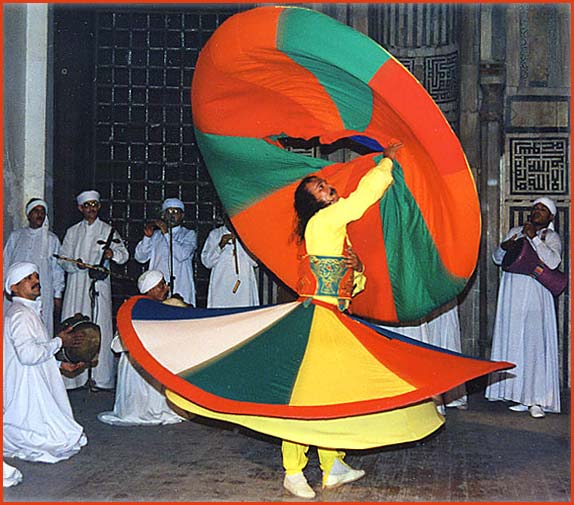|

by John Clare
New Year's Day
Of course they celebrate Christmas in the Algarve, but New Year's Eve,
and New Year's Day are the real days for fun here.
At midnight the church bells rang out, and fireworks spouted into the
sky from two sites; one by the old fishing port in Portimao, and
another from the top of the rocks at Praia da Rocha. We had fifteen
minutes of splendid rocket showers.
Later that day we drove to a little village called Paderne to attend a
medieval fair.
Paderne is a small village inland from Albufeira. It is built below the
castle, which was built by the Moors back in the second half of the
12th century. The castle is one of seven on the national flag of
Portugal. Its location on a rocky peninsular bend was of strategic
importance as it controlled the ancient Roman road "Via Lusitanorum"
where it crossed the Quarteira River. The Roman bridge still stands at
the crossing point.

The castle walls are 1.8 metres thick and are still largely intact,
although they are built from a mixture of mud, chalk, lime and
aggregate that sets like concrete. The castle changed hands several
times during the twelfth and thirteenth centuries, and finally the
Christian forces of King Afonso 3rd captured it and massacred the whole
local population. (These events dont seem to change as the centuries
roll on, merely the names by which the deeds are done!)
The medieval festival tries to recapture the flavour of those changing
times. The square is filled with booths set up in an attempt to look
medieval, with folks dressed in medieval peasant costumes, or in
djellabas. There are bales of straw everywhere, and wood fires for
cooking food. There are also some of the Portuguese cooking ovens,
looking like white domed beehives. Folk are baking bread in these
ovens. There is a pig roasting on a spit. There are several booths
selling Moroccan goods, with silverware, small tables, silver samovars,
and glasses for mint tea. There are cake stalls, and bread stalls, and
a variety of eateries.
On one side of the square is a covered stage, in front of which is a
sanded area set out for jousting. We stop for a roast pork roll and the
kids drink totally inauthentic coca cola.
At four o'clock the stage area fills with some twelfth century serfs
who set out swords and lances, and place straw bails in strategic
places. This is followed by a prosession of knights, squires, jugglers,
and a whole assortment of oddbods, including a girl on a donkey,
another girl leading an irish wolfhound, a few tarty bellydancers, and
some assorted hangers-on.
The stage fills with a bunch of guys pretending to be notables. There
is a fat priest, a couple of nobles dressed in long cloaks, and a
military-styled master of the entertainments. We are then regaled with
a long boring speech, which is presumably supposed to capture the
flavour of the times, and briefly introduces us to the entertainments
set up for our delectation, and, in passing, we are enjoined to be good
and peaceful citizens, and then the blighter has the cheek to remind us
all to go and pay our taxes.
This was mercifully followed by some actual entertainment, and we began
with what was supposed to be some apprentices practising sword-play.
This passed on to the real thing, with contests between two guys, one
with a sword and shield, the other with axe and shield.
Then came the jousting contest. There was this tilting quintain half
way down the sanded area, and of course the guys had to hit the plate,
which spins the quintain round. It should have had a sack on the other
end of the arm which is designed to unhorse anyone who is a bit slow in
getting out of the way, but they dispensed with that, which was a bit
of a cheat.
After tilting at the plate on the quintain, a cabbage was place on its
spike, and the knights hacked it in half with their swords as they
thundered past on horseback. Next a ring was placed in position, and
that had to be lifted off with the end of a lance.
Of course there was the usual over-acting and scenes of absurd bravado,
and a few of the knights pretended to screw it up completely, and then
turned threateningly on the crowd when they booed. In short, everyone
had a good time.
Next on the agenda were three girl dancers, dressed in moorish garb.
They were a bit wooden, and were a bit of a disappointment. One of them
produced a python and there was a bit of interplay with two of the
girls and the snake. Then on came a whirling dervish, who was
undoubtedly the star turn.
He had a couple of wide hooped skirts around him, and was carrying five
decorated trays, which he kept rearranging into fancy patterns as he
whirled round and round. Then he got rid of the trays and concentrated
on doing fancy things with the skirts. He managed to get one of the
skirts to curve downwards while the other curved upwards, and then
worked the top one so that it spun clear of his body and then dropped
back down over his head. Then he got the skirts to reverse, so that the
top one curved down and the bottom one curved up, thus neatly enclosing
himself completely. To the accompaniment of pipes and tabard he spun on
and on. A very impressive performance.
Next year I shall be back, and this time I will remember to take my
camera. If you are in the Algarve you should certainly attend. It's
well worth the trip.
|

